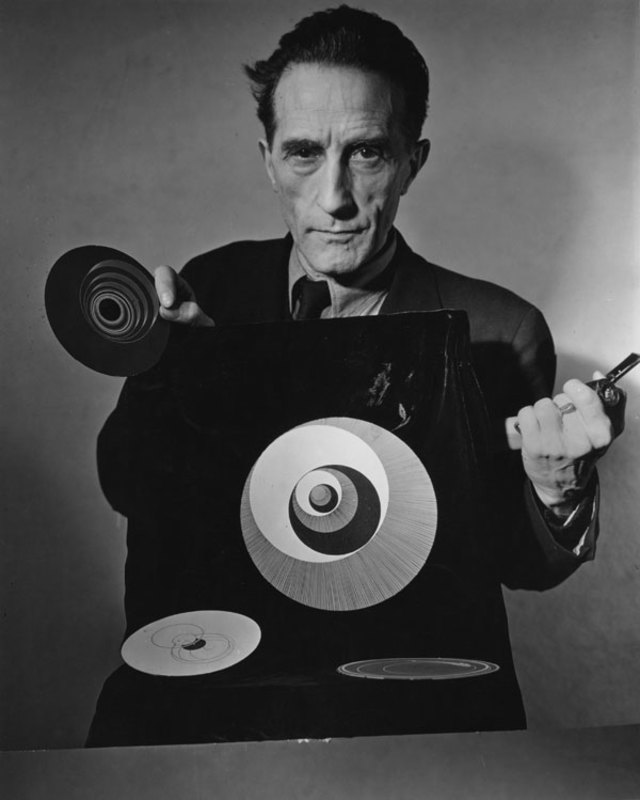
Hans Richter was the most important film maker to come out of the German Dada movement before it moved to France and evolved into Surrealism. The Dada movement started during World War One in Zurich, Switzerland amongst writers and artists, mostly Germans and a few Rumanians, hiding out from the war. The ideology of Dada was a rejection of any and all bourgeois values that they associated with a society that seemed to be completely falling apart in the carnage of the first mass industrial war. This rejection even extended to previous avant garde art movements like Impressionism, Expressionism, Fauvism, Symbolism and Art Nouveux. What was the point of painting pretty pictures or writing poems when millions had died the war and millions more in the influenza epidemic and famines that followed? Wasn't the art establishment just as corrupt as the rest of society? Then the only answer to produce art and literature that mocked the very idea of art itself. Dada exhibitions were considered a success if the audience stormed out, or even better started a mini riot. Such a movement was perfect for the early years of Wiemar Germany in the aftermath of the war.
Dada (the name was intentionally meaningless) was not soley, or even mostly a visual medium. Some of the original group were in fact not artists at all but poets with no artistic training at all. Early Dada art ranged from steam-of-consciousness poetry (later taken up by the Beats), randomly assembled plays and dances, performance art pieces and "ready-made sculpture" taken from "found objects". In it's visual look the most iconic visual representation was the "photo-montage" and collages made from newspaper clippings and advertisements. Later, as Dada spread it would attract the likes of skilled artists like Marcel Duchamp and the photographer Man Ray. The use of photography was particularly well suited for the Dada's style being both highly modern and not requiring years of training to use.
HANS RICHTER ~ "DADA HEAD";
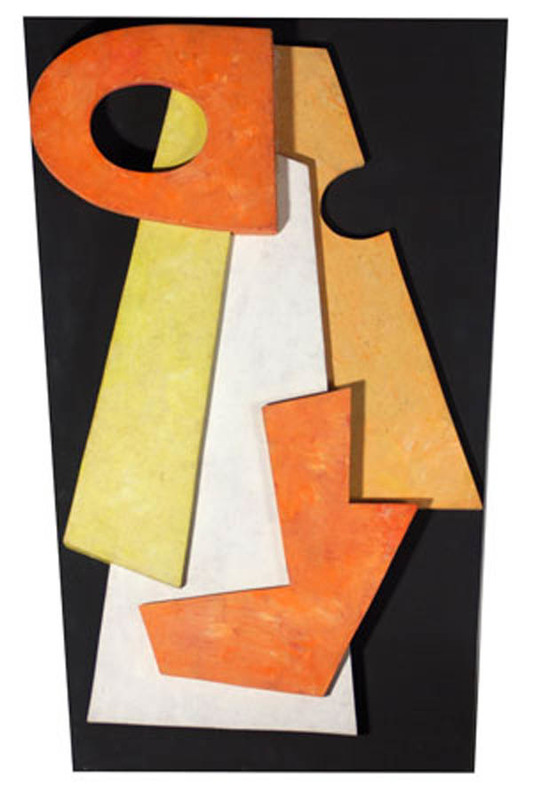
Hans Richter was born in 1888 in Berlin and started out as a painter influenced by Cubism , he also wrote for the arts journal "Die Aktion". When World War 1 broke out and he was drafted and served in combat until he was wounded and sent home in 1916. After recovering he moved to Switzerland and joined the Dada movement originally as an abstract painter influenced by Mondrian, Malevich, Kandinski and Klee but he also developed an interest in film as an artistic medium. At this time film was still largely thought of a vulgar venue for cheap entertainment, however in Germany the Expressionist movement who had already been working with theater and dance had begun experimenting with film, as had the Futurists in Italy. Richter began writing about the possibilities of film and music in the Dutch journal "De Stijl". He also befriended the Swedish artist Vikking Eggeling who shared similar views and they co-founded the Association Of Revolutionary Artists in 1919. By then both had moved to Berlin and joined the Dadaist "November Group".
HANS RICHTER;
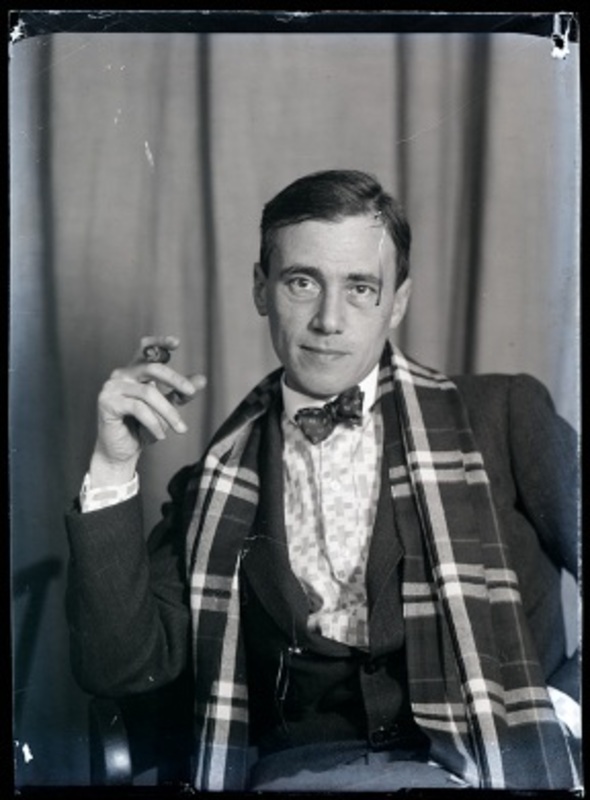
Richter made his first film in 1921 with "Rhythmus 21", followed by "Rhythmus 23" and "Rhyhums 25" in alternate years as indicated by the titles. Apparently only the first film survives. These short films used abstract shapes randomly floating in space like a Mondrian painting come to life and had no plot or even any visible human cast. As indicated by the titles Richter saw the films in musical terms. This was a theme shared by other contemporary German filmmakers such as Vikking Eggeling's "Diagonal Symphony" in the same year and Walter Ruttman's "Opus Number 1" and "Berlin; Symphony Of A Great City" and FW Murnau's "Nosferatu, A Symphony Of Terror" the following year.
"RHYTHMUS 21" ~ 1921;
Richter expanded on his musical theme in 1926 by collaborating with Darius Milhaud on the film "Filmstudie". This was another abstract themed movie but this time Richter expanded his palate to include swirling clouds, disembodied heads and floating eyeballs along with his Mondrian shapes.
"FILMSTUDIE" (new score added) ~ 1926;
In 1927 Richter was commissioned by the giant UFA studios to create an opening montage for a minor Expressionist social melodrama. The resulting film showed Richter breaking away from abstraction and making use of more emotional Expressionist themes to portray Germany's economic crises of the 1920's. Scenes of Marks and coins falling from the sky and piling up while worried faces swirl past and consumer goods hover out of reach still perfectly evoke the chaos of the Weimer roller-coaster. The film was later shown by itself entitled "Inflation" and has survived long after the larger film (which Richter had no other involvement with) has been forgotten. Oddly the film has been the Richter film most often seen, albeit in fragments and out of context when used in many documentaries about the 1929 stock-market crash, and even in docs about the Roaring Twenties in the USA which is not at all what he intended. The film's use of double exposure and inanimate objects to tell it's story has been much imitated even by those who may never have seen the original.
"INFLATION" ~ 1927;
The next year Richter followed up his success with an odd short called "Vormittagsspuk", which roughly translates as "Ghosts Before Breakfast" (trust the Germans to actually have a word for that), a meaningless title for a return to Dada themes. The film has no plot as befits the unstructured nature of Dada, instead it is a random series of scenes some which seem improvised but probably were not. Just because there is no plot or dialogue doesn't mean there is no theme though. The coming to life of inanimate objects like hats and bowties which take the opportunity to sail free is perfectly suited to DaDa's basic ideal of anarchy (in a personal sense), non-conformity, anti-authoritarianism and freedom from bourgeois values. Note that the objects once they break free do not attack our overwhelm their owners as a futurist film-maker might have done (think of Fritz Lang's Expressionist/Futurist classic "Metropolis"), they simply fly away joyously. Dada, for all it's eagerness to offend the calcified establishment always had a mischievousness sense of humour which this film shows. This is different from the dark moodiness of Expressionism, Germany's other great art movement of the era. Note also that at the end of film the escaped bowler hats return to their owners, which might seem to undercut the film's message of freedom..
"VORMITTAGSSPUK" (AKA "GHOSTS BEFORE BREAKFAST") ~ 1928;
Originally there was apparently some sort of soundtrack for this film, most likely some cacophonic music and sound effects, but that was lost when the film was banned by the Nazi's and most copies (there can't have been very many) destroyed. That reveals one of the big differences between Dada and the Expressionists; the Nazi's hated both but Dada could not be co-opted. As German film critics Freidrich Kracaur and Lotte Eisner have noted in their influential books, some of the more clever Nazi's, like Leni Reifenstal, Josef Goebles and Albert Speer admired Expressionism's visuals, it's sense of spectacle, it's emotionalism and successfully sought to appropriate this imagery for their own use. There was nothing in Dada that a totalitarian state could make use of. Even though the Nazi's banned most Expressionist works they also tried to recruit their directors and actors to make Nazi propaganda. Fortunately the best of the Expressionists such as Fritz Lang, FW Murnau, Robert Wiene, GW Pabst and actors Conrad Veidt, Peter Lorre and Marlene Dietrich quickly fled but others like actors Emil Jannings, Werner Krause, Lil Dagover, actor/director Paul Wegener and writer Thea Von Harbou stayed and continued to work under the Nazi regime. There was no such ambiguity with the Dada's though, the Nazi's banned their works and they fled. Including Richter who the German film historian Fredrich Kracaur called "One of the few truly incorruptible artists of the left".
HANS RICHTER ~ "WORKERS";

By the mid twenties Dada had spread from Germany to France where it fell into feuding factions eventually leading to Surrealism. The Surrealists would include filmakers Bunuel and Dali's classic anti-films "Le Chien Andelu" and "L'Age D'or". However Dada doesn't have a real equivalent film in public stature, these fairly obscure German films are the closest thing the Dada's have. The differences between Dada and Surrealism are difficult to define, at least in film. In art the Surrealists felt the Dada's lacked depth and discipline, they wanted to go beyond merely shocking to a deeper exploration of dreams and the subconscious. The Dada's simply could not stomach such serious theorizing, they to mocked the very idea of art being used to "explain" anything at all. Dada, with it's cadre of writers, expressed itself as much through it's poetry and plays as through the visual arts, while Surrealism with such talented painters as Margite and Dali, developed it's distinctive visual style of hyper-realism dreamscapes that is distinct from Dada. On film however the difference between this film and Bunuel's "Un Chien Andulu" are not that great. Bunuel's film is clearly more nightmarish (that infamous sliced eyeball) and eager, if not over eager, to offend than the playful "Ghosts". Of course the comparison is not entirely fair, Bunuel became a serious and respected film-maker and "L'Age D'Or" was no doubt carefully planned out in advance while "Ghosts" looks like it was probably dashed of over a weekend.
HANS RICHTER ~ "COLOURFUL CITY WITH ZEPPELIN";
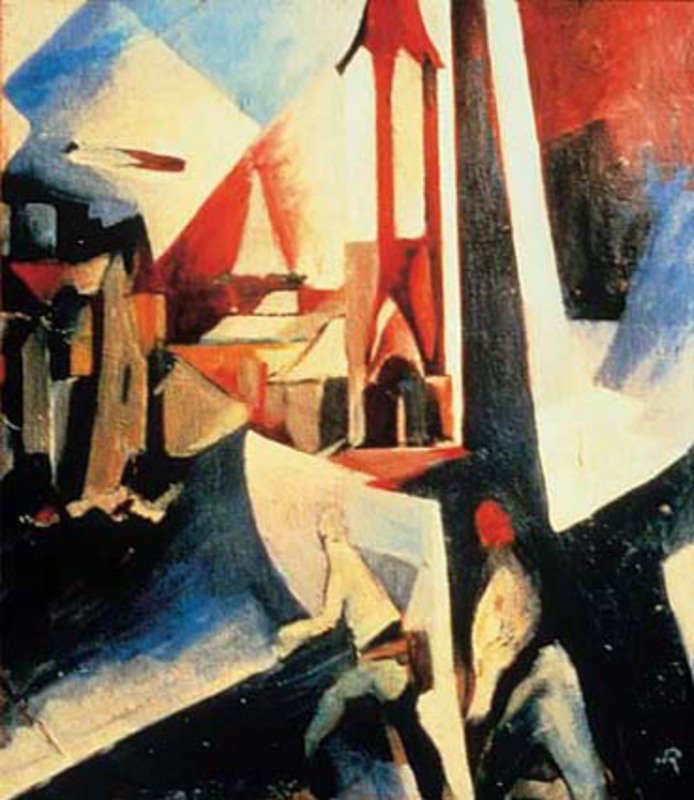
"Two Pence Magic" is another short made around the same time which shows Richter adding some influences from the Futurists. The film starts with a street magician preparing a trick which then leads to a series of seemingly random images. However on a closer look the images show the the Futurist obsession with action, speed and movement; note the runners, cyclists and boxers. The film also has a political subtext that modern viewers might miss; the sequence showing men in suits shaking hands then cutting to a scene of two men boxing. Those men in suits are in fact Woodrow Wilson and other allied statesmen at the end of World War negotiations , an image any German of the era would have recognized instantly. Also recognizable is a quick shot of a hunched over man creeping up the stairs in silhouette which is clearly a tribute to a similar shot in "Nosferatu".
"TWO PENCE MAGIC" ~ 1929;
Once the Nazi's seized power Richter fled back to Switzerland and then in 1940 to America where he taught film studies at the Institute of Film Techniques at City College in New York. In 1947 he directed a colour feature film "Dreams That Money Can Buy" in which a man discovers that he has the power to envision people's dreams and project them. He therefore opens an office an sets up a business reading people's dreams. This premise is used to string together a series of increasingly odd dream sequences. These are separate collaborations with various artists ranging from old Dada friends like Max Ernst, Marcel Duchamp, Man Ray, Darius Milhaud, Fernand Leger and Richard Huelsenbeck to newer ones like John Cage, Alexander Calder, blues singer Josh White and notorious torch singer (and black widow murder suspect) Libby Holman. The various sequences have nothing in common with each other and are unconnected. With it's obvious focus on dreams rather than the randomness of Dada the film has more in common with Surrealism than Dada. There is a great jazzy/lounge musical soundtrack through the entire film which is surprisingly modern.
"DREAMS THAT MONEY CAN BUY" ~ 1947;
Richter remained a loyal Dada long after the movement had faded away, writing a definitive account "Dada; Art And Anti-Art" in 1965. His final two movies were Dada studies that reunited Richter with his old Dada companions. "8x8; A Chess Sonata In Eight Movements" in 1957 which included appearences by Marcel Duchamp, Jean Cocteau, Max Ernst, Fernand Leger, Alexander Calder and others. The title also suggested a return to his 1920's theme of musical composition. His last film was "Dadascope' in 1961 which included poetry by Dada founders Marchel Duchamp, Jean Arp, Raoul Hausmann, Richard Huelsenbeck and Kurt Switters. After leaving film-work Richter returned to painting until he died, one of the last surviving Dada's in 1976 aged 87.
"DADASCOPE" (1961)
HANS RICHTER ~ "THE BLUE MAN";
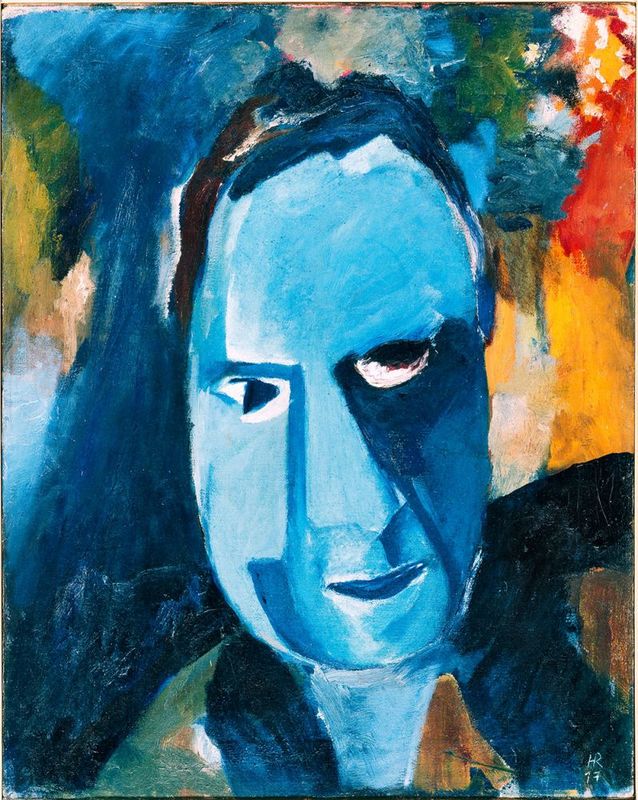

No comments:
Post a Comment